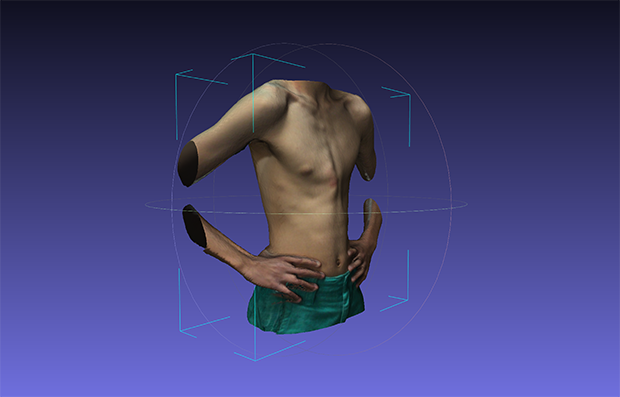
3D chest wall scan. Schulich School of Engineering, University of Calgary.
Pectus excavatum (PE) and pectus carinatum (PC) have generally been considered an aesthetic issue, although there is growing evidence of associated cardiopulmonary function (CPF) impairment, especially in PE patients. The study goal was to determine any correlation between pectus malformations and cardiopulmonary symptoms and function based on systematic assessment of CPF and thoracic measurements, such as Haller Index (HI) and sternal torsion angle (STA).
Data from 76 adolescent patients with PE (n=30) or PC (n=46) were retrospectively collected referred between January 2015 and April 2018. CPF measurements and thoracic imaging were performed in all patients. HI and STA correction indexes were measured in all patients.
Medical records from 76 patients (PE n=30; PC n=46) were analysed. Patients were predominantly male (>93.3%), and aged between 13 and 14½ old. PE was associated with airway obstruction, with a forced expiratory volume in 1 s value under the lower limit of normal in 13% of cases (p<0.001). Restrictive syndrome was observed in 23% of cases (p<0.001), with a Z score for total lung capacity under the lower limit of normal. In PC, pulmonary function was not affected. All patients showed slightly decreased values of left and right ejection fraction and cardiac index at rest, although values were within normal range. There were no significant correlations between pulmonary and cardiac functions or between low CPF and thoracic measurements.
Our results confirm the modest impact of pectus malformations on CPF at rest, without correlation with anamnestic dyspnoea on exertion, nor with chest pain or anatomical measurements. Validation of new correction indexes could be helping characterise these malformations and choose optimal therapeutic management.
- What is the impact on cardiopulmonary function (CPF) of chest wall deformity, such as pectus excavatum (PE) and pectus carinatum (PC): can we assume that these two chest wall malformations have no impact on CPF, even in clinically symptomatic patients, and do we have clinical measures or correction indexes predicting the CPF results?
- Independently of chest wall deformity, pulmonary and cardiac functions remained within the normal range, although several measures were clutering around the lower limit of the norm. Even though symptoms at rest were present, these functional anomalies did not correlate with clinical impairment, dyspnoea on exertion, neither chest pain nor correction indices measurements at rest.
- This study is the first to concomitantly report on pulmonary and cardiac function in adolescent patients with either PE or PC. We compared the type of thorax deformity with cardiopulmonary symptoms based on the systematic assessment of CPF and thoracic imaging, in addition to the Haller Index and sternal torsion angle that were measured with a standardised method in all patients.
Cardiopulmonary function in adolescent patients with pectus excavatum or carinatum, Ramadan S, Wilde J, Tabard-Fougère A, Toso S, Beghetti M, Vallée JP, Corbelli R, Barazzone-Argiroffo C, Lascombes P, Ruchonnet-Métrailler I. BMJ Open Respir Res. 2021 Jul;8(1):e001020. doi: 10.1136/bmjresp-2021-001020. Full text, PDF

